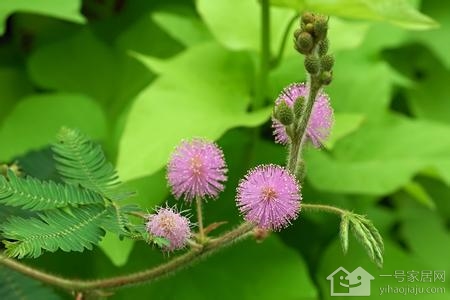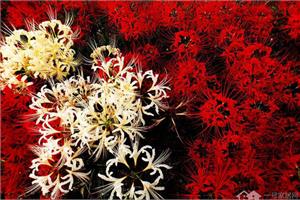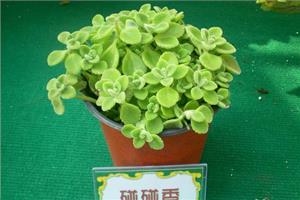Information about mimosa the reasons for the shyness of mimosa
Mimosa is an interesting plant isn't it? Speaking of mimosa, I'm sure you all know it. It's a magical grass that shrinks when you touch it. Next, let's take a look at the reason why mimosa is shy.

Information on mimosa
Mimosa is a perennial herb of the genus Mimosa of Leguminosae in tropical America. Because of its unique physiological habits, it has many nicknames, such as laughing grass, sensitive grass, drinking grass, mimosa, ugly grass, mimosa and husband-and-wife grass and so on.
Distribution: shy grasslands are found in tropical America and have now spread to many parts of the world. Because of its tenacious growth, it is treated as a weed in many countries.
Morphological characteristics: perennial herbs. The flowers are pink and shaped like fluffy balls. Pods bear fruit after flowering, and the fruit is flat and round. Leaves are feathery, compound leaves alternate, palmately arranged, and when touched by the outside world, the petiole is drooping and the leaflets are closed.
Why is the mimosa shy?
1. The most important feature of mimosa is that when it is stimulated (such as touching), the leaves of mimosa will contract and come together. If the stimulus is strong, the stimulus will be quickly transmitted to the adjacent leaflets, and even to the entire compound leaflet, causing the petiole to droop. If the stimulation intensity is larger, it can even make the leaflets of the whole plant close and the compound leaves droop. But after a period of time, the original state can be restored. Mimosa also responds quickly to vibration, which begins to respond after 0.1 s of stimulation and is completed in a few seconds.
2. Mimosa also closes the leaflets and the petiole droops in the dark, and in the daytime, when some of the leaflets are shaken, they also close in pairs. It is more sensitive when the light is weak, and the water in the leaf pillow usually supports the leaf, but when it is stimulated by an external force, the water in the leaf pillow will immediately flow elsewhere, closing the leaves of the mimosa. In addition, it automatically contracts at night (that is, sleep exercise). This uniqueness is the source of the mimosa name and nickname.
3. Because of its strong vitality and messy growth, mimosa is classified as grass in many places, but in fact it will blossom. Mimosa blossoms from July to October every year, but its flowering period is so short that it dies after flowering for less than two days. The flower is pink, the head is spherical and shaped like a fluffy ball. It will also bear pods after flowering, and the fruit is flat and round.
4. At the base of its petiole, there is an inflated organ called "leaf pillow". There are many parenchyma cells in the leaf pillow, which are very sensitive to external stimuli. Once the leaf is touched, the stimulation immediately spreads to the leaf pillow, and then the cell fluid in the parenchyma cells begins to flow to the intercellular space, which reduces the expansion ability of the cells, and the pressure between the cells in the lower part of the leaf occipital decreases. As a result, the leaf closes and the petiole droops. After 1-2 minutes, the cell fluid gradually flowed back to the leaf pillow, so the leaves returned to their original appearance.
The leaves and petioles of mimosa have special structures.
At the base of the petiole and at the base of the leaflet of the compound leaf, there is a relatively inflated part called the leaf pillow. When the vibration reaches the leaf pillow, the cell fluid from the parenchyma cells in the upper half of the leaf pillow is discharged into the intercellular space, which reduces the turgor pressure of the cells in the upper part of the leaf pillow, while the parenchyma cell space in the lower part still maintains the original turgor pressure. as a result, the leaflets stand upright, the two leaflets close, and even the whole leaf hangs down.
It has been studied that within 0.088 seconds after being stimulated, the mimosa leaves will close, and after a while, the small leaves will reopen and the petiole will stand up. The recovery time is usually 5-10 minutes. However, if we continue to tease and stimulate its leaves one after another, it will feel "bored" and will no longer react. This is because the continuous stimulation causes the loss of the cell fluid which controls the opening and closing of the leaf occipital cells and can not be replenished in time. Isn't that interesting? If you want to know more related information, you can continue to follow the No. 1 home network.
- Prev

Black mandala information Different colors of mandala flowers represent what
Black mandala information Different colors of mandala flowers represent what
- Next

What is the function of bumping incense? the collocation of bumping incense with household style
What is the function of bumping incense? the collocation of bumping incense with household style
Related
- Wuhan Hospital Iron Tree Blooming Result Was Instantly Frightened by the Gardener Master
- Which variety of camellia is the most fragrant and best? Which one do you like best?
- What is the small blue coat, the breeding methods and matters needing attention of the succulent plant
- Dormancy time and maintenance management of succulent plants during dormancy
- Minas succulent how to raise, Minas succulent plant pictures
- What are the varieties of winter succulent plants
- How to raise succulent plants in twelve rolls? let's take a look at some experience of breeding twelve rolls.
- Attention should be paid to water control for succulent plants during dormant period (winter and summer)
- Watering experience of twelve rolls of succulent plants
- Techniques for fertilizing succulent plants. An article will let you know how to fertilize succulent plants.

